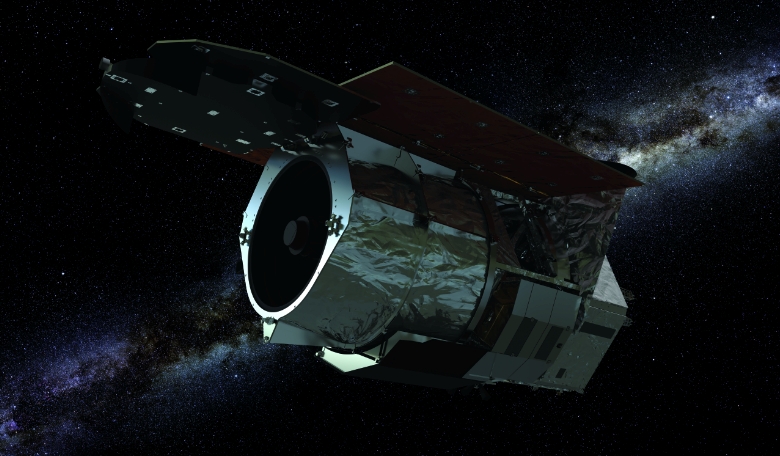Calling President Donald Trump’s new U.S. budget proposal “bad news for science” with “cuts everywhere,” Princeton University astrophysicist David Spergel wrote March 19 on Twitter that he hopes “bipartisan support for basic research will again prevail.”
Spergel is the science co-chair for NASA’s planned Wide Field Infrared Survey Telescope, or WFIRST (pictured on this page), which the agency has called its “next great observatory” coming down the pike after the James Webb Space Telescope. The Trump administration’s proposed fiscal 2020 budget, made public March 11, includes no money to continue building WFIRST. The administration proposed cutting WFIRST in the fiscal 2019 budget as well, but members of Congress later decided to fund another year of work.
“The President’s plan to cancel WFIRST would abandon US leadership,” Spergel Tweeted when first reacting to the news. “Why would anyone work with NASA if we stop a top ranked astrophysics project in the middle of its development. No science or technology roadblocks. Just a decision not to fund,” he wrote, pointing out that the telescope is “on schedule to an on budget launch. All of the technologies are ready to go.”
Designed with the sensitivity of the Hubble Space Telescope but 100 times the field of view, “WFIRST will characterize extrasolar planets, advance planet imaging, discover thousands of planets at orbits like Earth, Mars and Jupiter, and provide our best measurements of the nature of dark energy,” Spergel continued.
Dark energy is the term scientists have come up with to try to explain the discovery that the universe is expanding faster and faster. WFIRST topped the U.S. National Academies of Sciences, Engineering and Medicine’s list of astrophysics priorities in 2010, in the organization’s “decadal” survey on the subject, published every 10 years to help guide funding decisions.
The White House’s “FY 2020 President’s Budget Request Summary” partly attributes the cut to “the delayed James Webb Space Telescope,” now projected to launch in 2021. “Funding both Webb and WFIRST at the same time would have required redirecting funding from other programs, disrupting the balance of the overall science portfolio,” according to the summary. The summary also points out that WFIRST started in 2010 as “a less-than-$2 billion” project but that the current design is different — NASA accepted the gift of a bigger mirror, in the meantime, from an intelligence agency that wasn’t using it — and that WFIRST is now estimated at $3.2 billion to $3.9 billion.
Webb gets $353 million in the fiscal 2020 request.
“And I will tell you it has been a challenge for me, as your NASA administrator, to go up to [Capitol] Hill and talk about the James Webb Space Telescope,” said the agency’s top official, Jim Bridenstine, in a speech March 11. “Some of you might have seen those hearings, and they’re not fun. But I will also tell you this: This administration is committed to the James Webb Space Telescope, and we have bipartisan support for the James Webb Space Telescope.”











